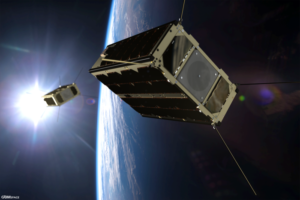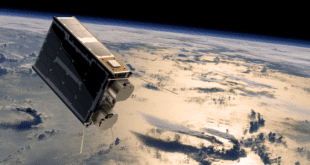
Germany’s TESAT, Norway’s KSAT, and Denmark’s GomSpace have partnered up to introduce full optical communications capability for new innovative small satellite missions and space-based services.
Until now this technology has mainly been used on large and expensive satellites but is now further developed, miniaturised and ready for use on small satellites and new constellations.
The new technology will be launched in the PIXL demonstration mission later in 2019.
The benefits of optical communications in space
Optical communication technology offers a number of important benefits that will add to the value of future space-based infrastructures; this includes support for dramatically higher data rates and improved security through narrow beam-widths.
To ensure a successful and accelerated market introduction of the technology, the partners have put all their competences together to demonstrate – by end of this year – that optical downlinks are ready to be used as operational downlink technology for nanosatellites.
A valuable collaboration
TESAT, the world leader in optical satellites communications, has successfully miniaturised the technology to allow its efficient use on satellites down to 3 kg and with data rates from 100 Mbps to 10 Gbps.
KSAT, the leading ground station network provider for new space customers through its KSATLite offering, is committed to building out a compatible network of optical ground stations and scaling it with increasing customer demand.
GomSpace, the world leader in nanosatellite design and manufacturing, has – in collaboration with TESAT – validated compatibility and integration between GomSpace satellite busses and TESAT’s miniaturised optical terminals.
End-to-end demonstration
The PIXL demonstration mission will be launched later in 2019 to demonstrate the full capability. TESAT with research partner DLR provides the terminal, which is integrated with a GomSpace provided satellite platform. A cost-efficient ground station solution will be operated by KSAT.
The partners are looking forward to a future where optical communication utilised both for satellite downlinks and inter-satellite links becomes standard and look forward to showing potential customers how soon that future can be a near term reality.





